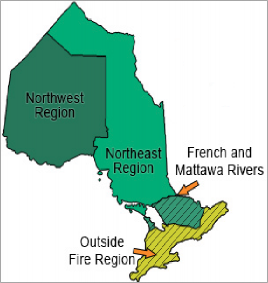Wildfires are natural and annual occurrences, often happening toward the end of dry summers. Most wildfires are caused by humans providing the igniting spark. Recently, in certain geographical areas, the environment has also become more flammable. As conditions become drier and more people are living in high risk areas, fires are getting bigger, more severe and costlier to put out. The world’s costliest single natural disaster in 2018, according to Munich Re, was the Camp and Woolsey Firei which occurred in the state of California. The alleged cause of the fire was improper maintenance of infrastructure and equipment by the Pacific Gas and Electric utility (PG&E). The statistics from that fire are as follows:ii
- Date: November 8 - 25, 2018
- Casualties: 89 civilians
- Missing: 3 civilians
- Non-fatal Injuries: 17
- Burned Area: 250,285 acres
- Use of the Land: recreational and residential/commercial
- Buildings Destroyed: 20,447
- Cost of Fire: $23 Billion (approximate)
- Cause of loss: improper maintenance of infrastructure and equipment by utility
Due to the large losses and the multi-billion wildfire liabilities attributed to this fire incident, PG&E was forced to seek bankruptcy.
Wildfires are not exclusive to California and of course, occur in Canada as well. The worst wildfire in Canada’s history occurred in Fort McMurray just a couple of years ago.
The following statistics are from that fire. iii
- Date: May 1, 2016 – August 2, 2017
- Casualties: 2 civilians
- Burned Area: 589,552 hectares
- Use of the Land: recreational and residential/commercial
- Buildings Destroyed: 3244
- Cost of Fire: 9.9 Billion
- Cause of loss: Undetermined
Outdoor Fires Regulation
In 2016, the Ministry of Natural Resources and Forestry (MNRF) has updated Ontario Regulation 207/96 Outdoor Fires to specifically include electrical power generation and utilities. The significance of this relatively new legislation is that companies that operate in the Ontario Fire Regioniv (as illustrated below) are required to review their operations for fire risk and have fire prevention plans, training and equipment in place.

These regulations are designed to help ensure that:
- Industrial operations are conducted in a manner that prevents wildland fires from starting
- Wildland fires are detected and reported to MNRF in a timely manner
- Industrial operators continue to work safely
- Employees are adequately trained to use available equipment to take safe action that will reduce the negative impact or damage from a fire, should a fire occur
The regulations do take a risk-based approach. (For more on this regulation and a list of low, medium and high-risk activities, see Appendix A attached to this newsletter. Low risk activities are exempt from the regulation.) Even for MEARIE Members not located in the Ontario Fire Region, it’s important to have robust risk management and incident response plans in place.
In addition to preparedness, MEARIE’s insurance offering has also been reviewed. In line with market expectations for wildfires allegedly caused by LDC operations, there are three main insurance coverages that may be triggered:
(1) First Party Property Damage. For damage to LDC owned or leased property (such as buildings), excluding poles and wires.
(2) Commercial General Liability. For compensatory damages where real or alleged negligence by the LDC caused the forest fire and injured other people and / or damaged other people’s property (for example local homes and businesses).
(3) Environmental Impairment Liability. For compensatory damages where real or alleged negligence by the LDC caused the forest fire and resulted in a third party pollution event; under the MEARIE policy, this coverage also expressly extends to cover the cost of fire fighting expenses, where required by law.
Although there is insurance coverage in place that may respond, the primary focus continues to be on vegetation management, employee training and swift incident response. MEARIE insurance coverage has been assessed and remains in-step with exposures unique to the electricity sector. ]
|
This Reciprocal Newsletter is an electronic publication intended for Subscribers of The MEARIE Group’s Insurance programs. It is published on a periodic basis and intended for information purposes only. In the event of specific claims, incidents or legal actions against the Subscriber, coverage will be determined by MEARIE policy interpretation.
|